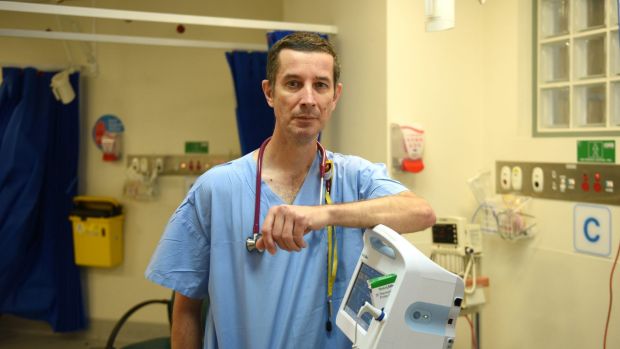More than nine times as many violent offences are committed in the New Year's Eve window between 9pm and 3am than at other times over the festive period.
With Sydney's hospital emergency departments bracing for a flood of patients on New Year's Eve, crime statistics show an average of 312 assaults recorded in that six-hour window, with the night the year's worst for violence.

Over the past five years, 125 violent offences on average were committed in the final three hours of New Year's Eve, soaring to an average of 433 in the first three hours of New Year's Day, an analysis of NSW Police records by the NSW Bureau of Crime Statistics and Research found.
It is a similar story in Victoria, where significantly more assaults and sexual assaults occur in the week leading up to New Year.

Bureau director Don Weatherburn said New Year's Eve was the worst night of the year for violent offences, which include assaults, sexual offences, robbery, murder and manslaughter.
"The combination of crowds, heat, alcohol and testosterone is toxic," Dr Weatherburn said. "Add methamphetamine into the mix and you've got a recipe for big trouble.
"When you're mingling in environments like pubs and bars and streets that are overcrowded, then there's much more room for conflict to erupt in violence."
More than a million people are expected to celebrate the new year in and around the city. It is the busiest night of the year for the emergency department of St Vincent's Hospital in Darlinghurst, with extra staff rostered on.
The head of trauma at St Vincent's, Associate Professor Tony Grabs, said the hospital got "swamped" at New Year by people injured in falls, fights and traffic collisions.
"It's a very difficult time for the ambulance officers, a very difficult time for the police, a very difficult time for the hospitals," he said.
"We see the consequences of people drinking too much and you can have lives destroyed. It can be disheartening when we know some of this is preventable."
Dr Grabs urged people to look after themselves and their friends while out.
"We don't want to put a dampener on New Year's Eve but people need to drink in moderation," he said. "People come in with blood alcohol [levels] which we just can't believe.
"We're looking at acute intoxication, people just not knowing when to stop. It's not just isolated events. The girls are very quickly catching up with the men in terms of that drinking ... we see younger women getting very intoxicated."
A recent study of heavy drinkers aged 16 to 19, conducted as part of the Young Australians Alcohol Reporting System, found males and females consumed similar amounts while pre-loading, or drinking before going out.
Previous studies found pre-drinkers were 2.5 times more likely to have been involved in a fight, and were more like to have been sexually assaulted at a club or too drunk to walk.
Professor Anthony Shakeshaft, deputy director of the National Drug and Alcohol Research Centre at UNSW, said restricting the availability of alcohol was the most effective way to reduce harm.
There has been a 45 per cent decrease in non-domestic assaults in Kings Cross, and a 20 per cent drop in the CBD, since lockout laws were introduced in 2014. A two-year trial of relaxed lockout laws begins in January.
"If you are intoxicated there's a greater probability of either becoming an offender or a victim of alcohol-related violence," Professor Shakeshaft said.
"It's up to the community to decide if they want pubs open later and if the answer's 'yes', then you're going to have more violence. If you don't want the violence, the best way to stop that is to close the pubs earlier."